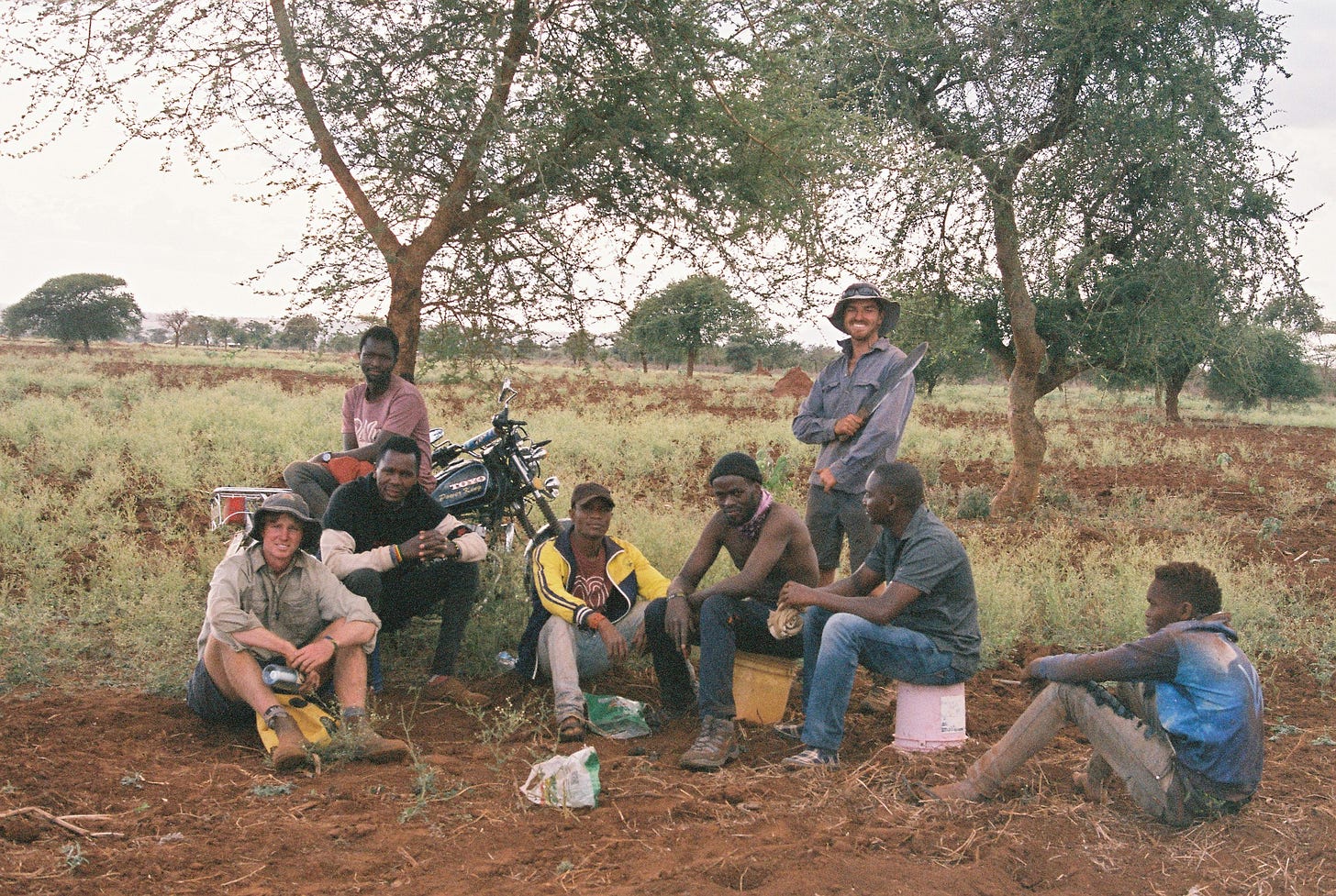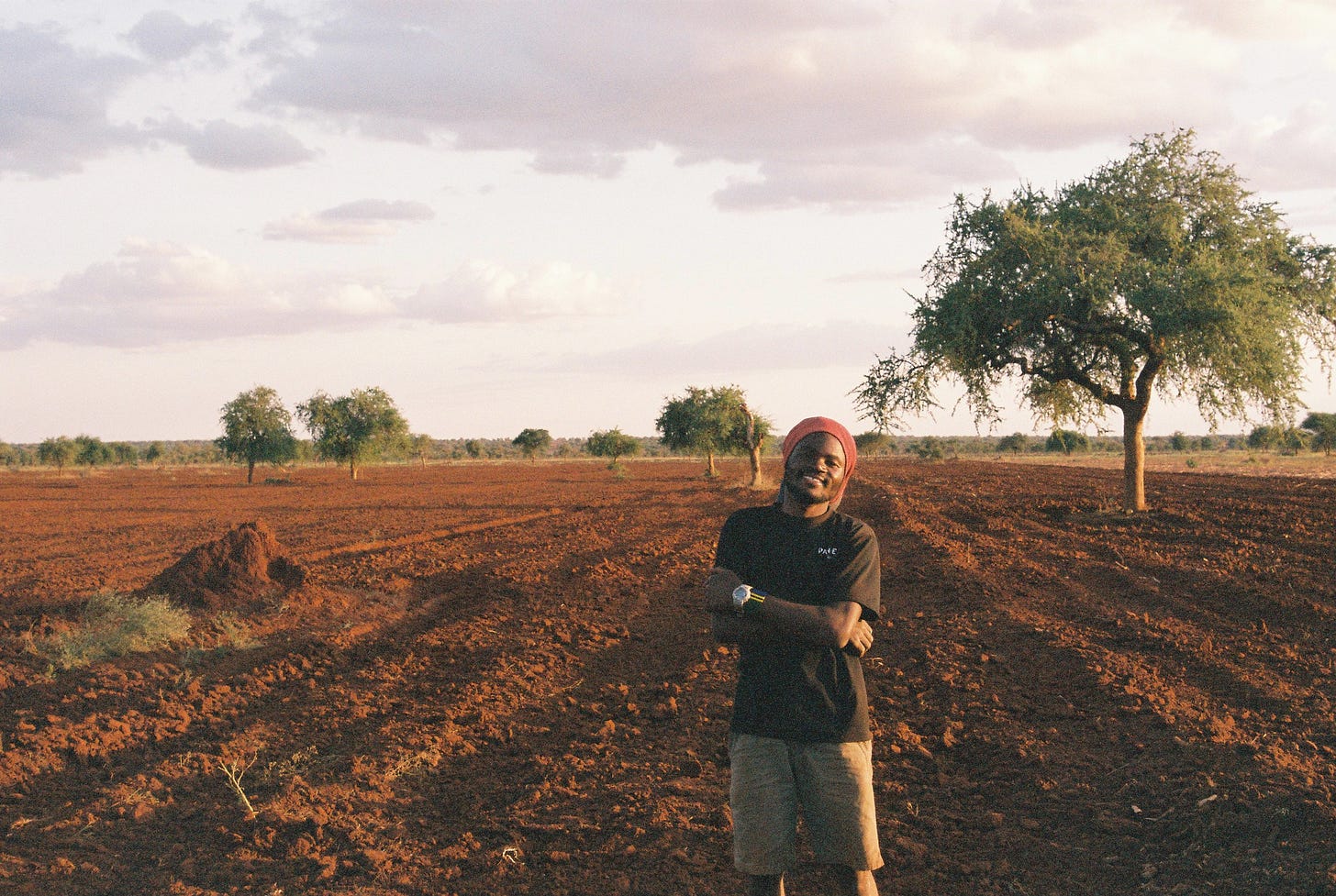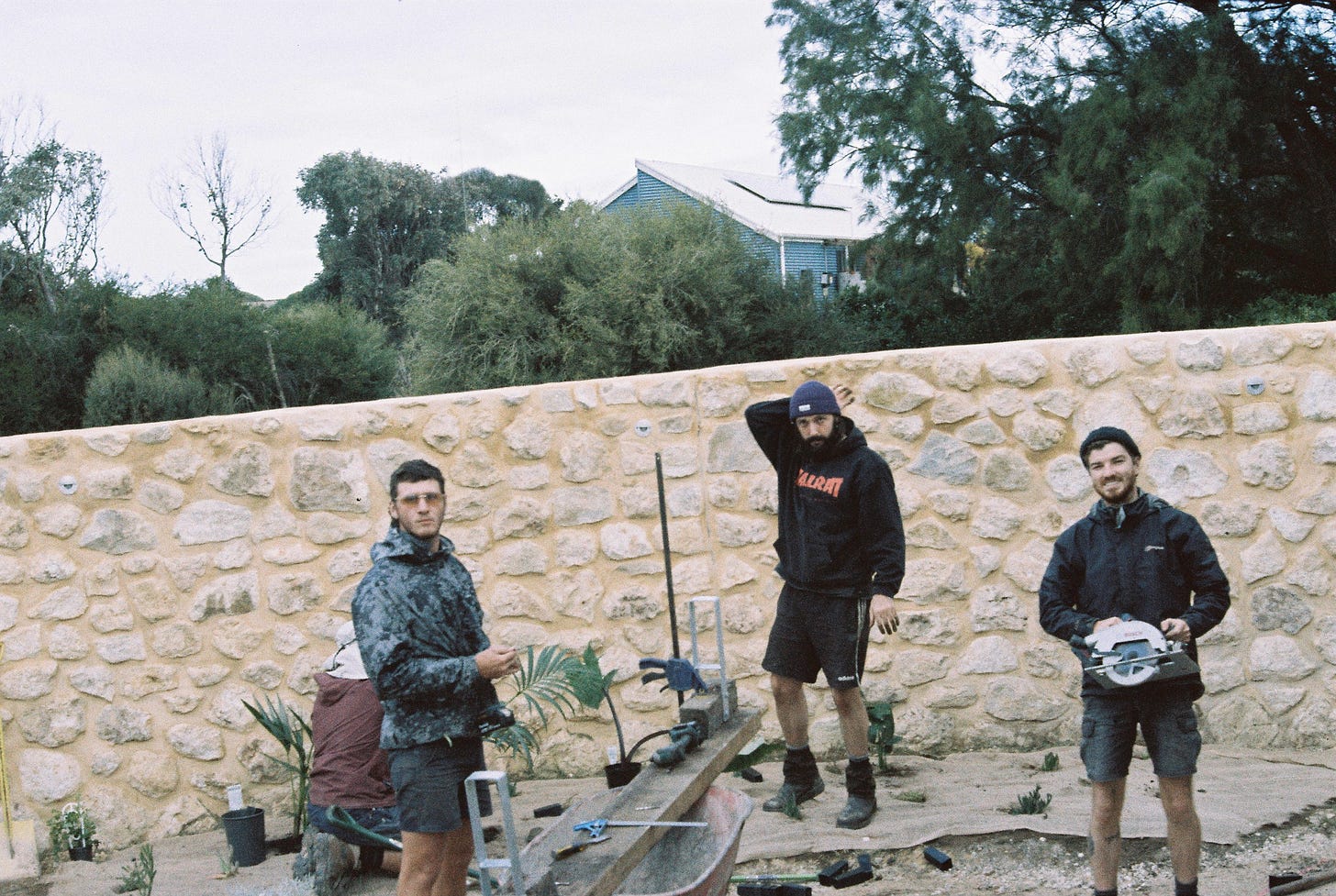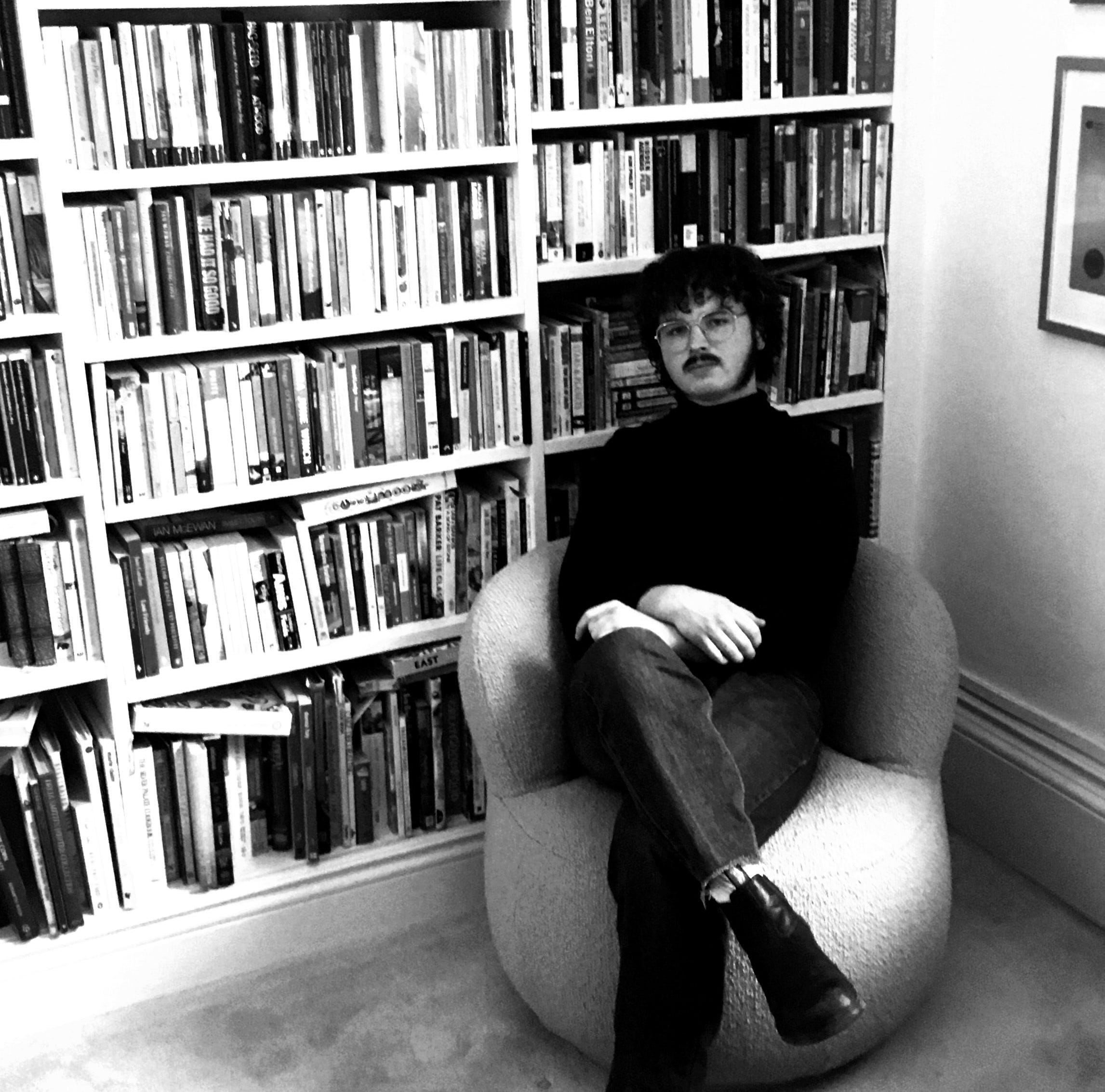
There’s no doubt in my mind that somewhat regrettably I’ve grown up to become a city-dweller, having lived in and amongst cities for all of my life, often on the outskirts of the city centre. I’m not at all ungrateful for the convenient locations I’ve lived in - from my home in North Adelaide, it only takes fifteen minutes to walk to the city, where, like many, I spend much of my time socialising or studying. Nonetheless, I sometimes wish for - perhaps, to an extent, even idolise - the country upbringing. Some of my cousins were raised in Upper Sturt, on a beautiful property tucked into a forest-lined valley, with free-roaming paddocks, vegetation, livestock, and an abundance of what we Australians tend to call ‘the great outdoors’. As children, my cousin Ned and I spent countless hours in those fields, climbing trees, building cubby houses, developing amateur short films, and cosplaying as our mutual hero, Indiana Jones. These are some of my fondest childhood memories.
In truth, I don’t spend nearly as much time in the country as I’d like to, but a few times a year I will embark on a road trip. It’s exciting and purifying to get out of the city for a while, to breathe in the clean country air rocketing down dusty Australian highways or red dirt roads, spotting wildlife beyond the window and letting the wind whip ferociously through your hair. Much of the Australian outback is visually spectacular: diverse landscapes range from the red sand dunes of the Simpson Desert, the limitless plains of the Nullarbor, and the ancient rock formations of the Kimberley region. This country is home to rugged and captivating natural environments that capture the imagination with its unique wildlife and cultural heritage.
Vast expanses of the country have been cleared, however, to create cities, towns, and agricultural properties. Whilst housing, infrastructure, agriculture, and commerce are necessary to upholding a developing economy, excessive land clearing in particularly the southeast of Australia has resulted in species extinctions, declines in native fauna, and erosion damage. Driving on Australian country roads, these flattened, cleared, or deforested areas are impossible to miss. Sometimes, they’re even disguised, rather half-heartedly, behind “green facades”, in which developers or companies preserve or selectively plant trees along roads to present the illusion that you’re driving through a naturally wooded area. Such misleading tactics are exploited by developers to superficially boost their public image or comply with environmental regulations while still pursuing activities that harm the environment.
On my most recent road trip, if one can call it that, I drove to Marion Bay in the south of the Yorke Peninsula, where I spent time with friends, including Gerry Bain, who not only runs his own landscaping business, Natural Landscapes Australia, but founded and organises a revegetation project called Breathe Easy. He’s been a landscaper for ten years, training through TAFE after he finished high school, and has run his own business for the past six years, with ambitions to operate across Australia in the future.
I remember walking across a boardwalk early one morning in Marion Bay: Gerry would point out different plants, shrubs, and flowers, pointing out their growth patterns, their survival systems, and the plants that were native or introduced. He boasts an extensive and fascinating breadth of knowledge on these topics, and displays an evident passion for conservation. While he was predominantly visiting the Peninsula for leisure, he took the time to observe the progress of one of the sites he’d worked towards revegetating. A few weeks later, when I sat down to interview Gerry, I reflected on the yellow, cleared fields I had passed while driving through the Yorke Peninsula. He told me this:
“You know, that's not how the natural bush was on the Yorke Peninsula. That used to be thick bushland: there were sand dunes, there were lakes, and now it's all topsoil and seasonal weeds. Sure, it feeds the country. It's very important, right? We need farmers, we need to feed 26 million people. That's a reality. But there are much better ways to connect with the land and use the land.”
As the name of his business suggests, much of his practice focuses on working harmoniously with naturally formed landscapes, paying attention to the details that create and characterise a space rather than clearing them for the sake of new construction or aesthetics. As one might expect, this has led Gerry down the route of conservation, which engendered the founding of Breathe Easy, an environmental initiative “working hard to protect and enhance the precious ecology of South Australia”.
“So halfway through starting my business, on the side I decided to start a little conservation group, revegetating degraded parts of land. I was living down at Middleton in a little house by myself, and my mate Ben, who runs Yeo Haus, asked if I'd like to do a tree planting day on their behalf, so I jumped at that opportunity and then built it from there.”
Since that initial planting day, Breathe Easy has continued to co-ordinate community planting days, “bringing young people together to make positive change whilst also giving the opportunity to local businesses to offset their unavoidable environmental impacts”. Gerry has fostered strong relationships with local councils and nurseries, and has hired musicians to perform during the planting days, including our talented friends Jack Green, Rory Biddell, Ned Baulderstone, and Eyrie.
Such planting days often take place in areas rich in salt bush or sand dunes. For example, Middleton has served as a recurring location for Breathe Easy projects due to the heavily weed-infested sand dunes and patches of unstable soil. During the Middleton Point planting day in 2020, 30 volunteers established 375 new plants and helped reintroduce native edible plants such as Pig face (Carpobrotus rossi). 2021’s Day Street dunes project involved intense weeding and dense plantings, allowing twelve species of native vegetation to thrive and support a broad variety of fauna, enhancing the strength and resilience of this dune environment. Perhaps their most successful project in Middleton was the Chapman Road planting day in 2022, during which 40 volunteers introduced 1000 plants to the dunes, focusing particularly on the Coastal Spinifex (Spinifex sericeus) due to the habitat it provides for the Hooded Plover, an endangered coastal bird species endemic to South Australia.
There have also been Breathe Easy projects along Emu Bay in Kangaroo Island and the restoration of a creek line in Aldgate (Adelaide Hills), as well as 2023’s Pamoja Project, when Gerry spent six weeks in Tanzania, East Africa, with friend and project-partner Aussie Redden, a student of agriculture fascinated by regenerative agricultural systems.
On a previous trip backpacking in Tanzania, Gerry and Aussie met Oska Kikoti, a friend of Gerry’s dad, who housed and looked after them during their time in Africa. Oska worked as a porter on Mount Kilimanjaro helping travellers carry their gear to the summit, but he lost this position during COVID. Gerry and Oska maintained contact between 2020 and 2023 discussing potential paths for collaboration.
“We came to the idea that farming might be a good idea. Agriculture is a good economic foundation for anybody, and it's also something that you can adapt and learn. I think it just seemed like a good idea for him to start, so through our friendship and conversation we explored what farming might look like for him. Then I helped fund his first project, and it took off from there.”

In mid-2023 Gerry and Aussie decided to backpack through Tanzania again, but this time with the objective of exploring the possibilities of agriculture in Africa. Living in Oska’s home in Kijenge Juu, Arusha for six weeks, they funded the planting of trees and hedges, and spent time on the four-acre farm cultivating the soil, sowing the seeds, and preparing the farm for agricultural use. Despite pursuing this goal with the best intentions, Gerry admits that he still faces some moral qualms:
“Essentially the Pamoja Project is our avenue to support our friends over there. And I suppose I'm trying to process where these things are coming from. I think there's a real dynamic - I haven't worked out the perfect words to use yet - but there's a white saviour complex. When you go to a place like Africa and you're a young white male traveller who's decided to spend his own money traveling to another country, that's a really strange thing for a lot of people around the world. So to come in and sort of knock the doors down and suggest that there's this cool new idea of regenerative agriculture is a really inappropriate thing to do. I think I was always quite sensitive to that, it's something I've got to be very careful of.”
For Gerry, the Pamoja Project is less about just offering information or ideas and assisting in the establishment of businesses, and more about helping Oska and other groups by providing them with funding - the “biggest tool they have” - to create their own means of agriculture and commerce. There’s no question that money is important, especially in the context of the Tanzanian economy, where, according to Gerry, two weeks of our rent in Australia would pay for six months of theirs. But the Pamoja Project also centralises friendship and support. In Swahili, the primary language spoken in Tanzania, pamoja translates to together as one.
During their travels, Gerry and Aussie also came into contact with a tree-planting organisation called the Mtokijani Foundation:
“Aussie was out just having a walk around the suburb and bumped into some dudes on motorbikes. I think they were sharing around a spliff and just getting to know the white guy in the town, you know, trying to work out who he was. So Aussie explained that he had come to travel, but that he helped run a tree planting group back in Adelaide, Australia, and the boys said they ran a tree planting group as well”.
Mtokijani run a very fascinating non-profit in Tanzania, cleaning rivers, planting trees, and creating an economic platform to employ young women to aid environmental projects. Breathe Easy have pledged to contribute 50% of the money they raise through the Pamoja Project to Mtokijani, with the other 50% going towards helping Oska.
Gerry and Aussie plan to travel to Tanzania again next year, with dreams of climbing mountains and organising rubbish clearings, in addition to meeting and collaborating with Oska and Mtokijani again.
What inspired Gerry to create Breathe Easy?
“It's funny you say inspiration, because it's sort of built on frustration. I wouldn't say I'm very inspired to act when I see forests get broken. It was definitely based around frustration and agitation. In the areas we've revegetated - coastal areas, primarily coastal urban areas - the destruction is based less on greed and more on the impacts of urban development. A lot of land has been cleared to make car parks and roads, which is where the weeds set in first. Through my own research and experience in the landscape industry, I’ve realised that the Australian environment was very, very different before colonisation. It's those thoughts that led me to think about how you can fix an environment, and that's by putting plants in the ground, to act as the soldiers that get that environment working again how it once did.”
Striking a balance between the creative elements of landscaping and his environmental concerns is a significant area of contemplation for Gerry, who builds landscapes for mostly middle and upper-class Australians “seeking to put their money into a luxury”. The primary concerns for these homeowners revolve around comfort and aesthetics, but it’s important for Gerry to uphold his ethics and ideals, and to initiate conversations with his clients that advocate for environmentally friendly features that enhance the ecology of a garden. Speaking to clients, he’ll often suggest alternatives to the plants they’ve asked for, such as those endemic to their suburb or indigenous to the land on which it was built. He gave me the following example:
“Maybe they want a row of roses in this area, but I might suggest introducing a native Correa, which is a flowering shrub that has quite the same effect as a rose but is Indigenous. This one in particular is endemic to your suburb, can we try this?”

Another central objective of Gerry’s is to engage with volunteers and encourage young people to participate in the projects. In the early days of Breathe Easy, particularly during COVID times, he started to realise that there was more to the planting days than simply putting the plants in the ground:
“A lot of people were a little bit lost, and I started to see what it might mean to these people to get their hands in the soil. I think it’s really important that we engage with young people and show them that there’s more to socialising than just sitting at the pub, more to work than just working for the man. It's really beneficial for people to involve themselves in something like a tree planting day, especially young people who, I think, can be quite sensitive to the world.”
Gerry says it’s a challenge to get people to feel comfortable involving themselves in the work organised by Breathe Easy. He feels as though people perceive Breathe Easy as his project, but he’d love it to be “everyone’s project”, and hopes people will be willing to work on the initiative with him in the future.
One way Breathe Easy “bribes” young people to participate in the planting is by organising live music as a feature of the day. Even in an outdoor, typically windy winter setting, where it’s hard to capture the sound, there’s something beautiful and almost harrowing about the hollow sound of the music that emanates throughout the environment.
“Art and music is about storytelling and expression, and I think environmentalism comes from a place of expression or comes from frustrations and sensitivities to the world. So art is a fantastic way to allow for the story and the agitation of environmentalism to be told. I think it really is important. Music is almost like an act of protest. That's the role it sort of plays in society as this unique expression. That's pretty important to us, and I think the way we're heading is to use the arts and expression to get people on board.”
How does he measure the success of his environmental initiatives, in terms of both community engagement and ecological impact?
“Community engagement is sort of shown in trusting what people say to me, I think, and taking the words as truth. A lot of people I love and trust support me in such fantastic ways and that's enough for me to keep going. Then environmentally it's tough because you're planting a legacy: what you plant today might still be around in 150 years as a huge tree, but you might not get to actually live to see it. So there's a lot of nuance to creating the ecology - You're almost playing God. So you can't really be sure of the success of your projects or the work you're doing, but you can be sure of the negative impacts. You can see if the weeds are slowing down or not growing anymore. I tend to look at the negatives before the positives in the environment, and if the negatives are decreasing, that's a good thing.”
Looking to the future, Gerry believes we’re living in a very promising time for conservation and environmentalism, as these important areas of activism continue to gain greater traction as more activists become involved and more issues are brought to the forefront. But, as he says, “it’s going to take work”. He places a great deal of emphasis on the importance of education and organised discussions around activism and environmentalism.
“I think education is critically important, and I think all of these strategies and groups and organised discussions around activism or environmentalism should be based around the sharing of knowledge and the commitment to learning about what's going on, why you're doing it. I think education, or just knowledge, the respect for knowledge, is just so important. So you've got to commit to knowledge - it isn't just about going to school and being told by one teacher. It's based around conversation and experience.”
He also hopes for more natural environment in our cities to create more biophilia - human connection to the environment. As someone who’s always in his garden, tending to his plants and vegetable patches, connecting to the environment through his business and Breathe Easy, Gerry wonders about those living in newly developed suburbs or apartment complexes that have limited or no relationship with the environment around them. He spoke of the importance of public parks and building trails, and their capacity to not only preserve natural ecologies but to bring about human connection and appreciation for the land. Looking deeper into the country, there’s an immense vastness of land cleared for farming that could be connected through what Gerry called “nature corridors” - connections across a landscape that link up areas of habitat. He thinks this would create highly profitable, high-yielding land, whilst preserving strips of natural bush that connect to each other.
“I think that all the farmers and all the tourists who go through the bush would benefit massively from less cleared land, and the environment would flourish.”
After having a stall at the recent Earth Jam event (which you can read about here), organised by the Nature Conservation Society of South Australia and our mutual friend Char Nitschke, Gerry looks forward to the rest of an exciting 2024, with Breathe Easy planting days planned for Winter and the release of music recorded by friends in Tanzania.
To add to what was already an enjoyable adventure, it was incredibly illuminating to listen to Gerry speak about native plants and ecosystems while we searched for a good surf spot in Marion Bay earlier this year. Getting the opportunity to be further illuminated by his giant lightbulb of knowledge a few weeks later was a pleasure. With Natural Landscapes and Breathe Easy, he’s engaged in some fascinating, progressive, and valuable projects, and I’m excited to continue following his journey and gleaning useful nuggets of information from him at every opportunity.
Thanks to Gerry for taking the time to sit down with me and answer my questions. I also can’t thank him enough for the armfuls of basil he let me pick from his garden. It helped make a pretty decent bowl of pesto a few nights later. If you have the opportunity to speak to Gerry, ask him about anything to do with plants, the environment, or conservation. I’d gladly stake good money on his proficiency to answer with the utmost accuracy.
This article was written, recorded, and edited on the traditional lands of the Kaurna People. The Infinite Rise observes that Country is central to the social, cultural and spiritual lives of Aboriginal people. Sovereignty was never ceded. Always was, always will be, Aboriginal Land.










Inspiring read, thank you
Jq